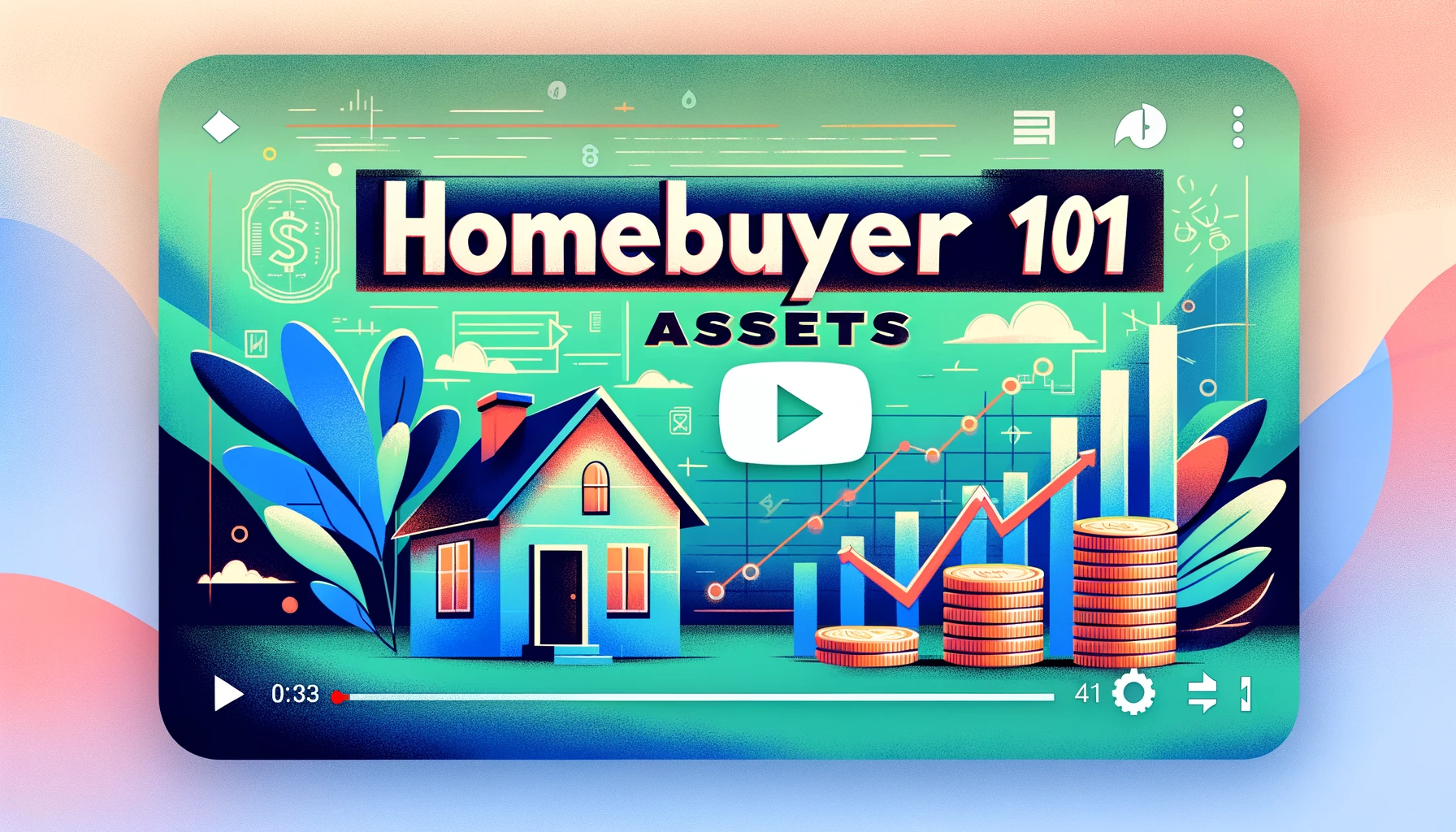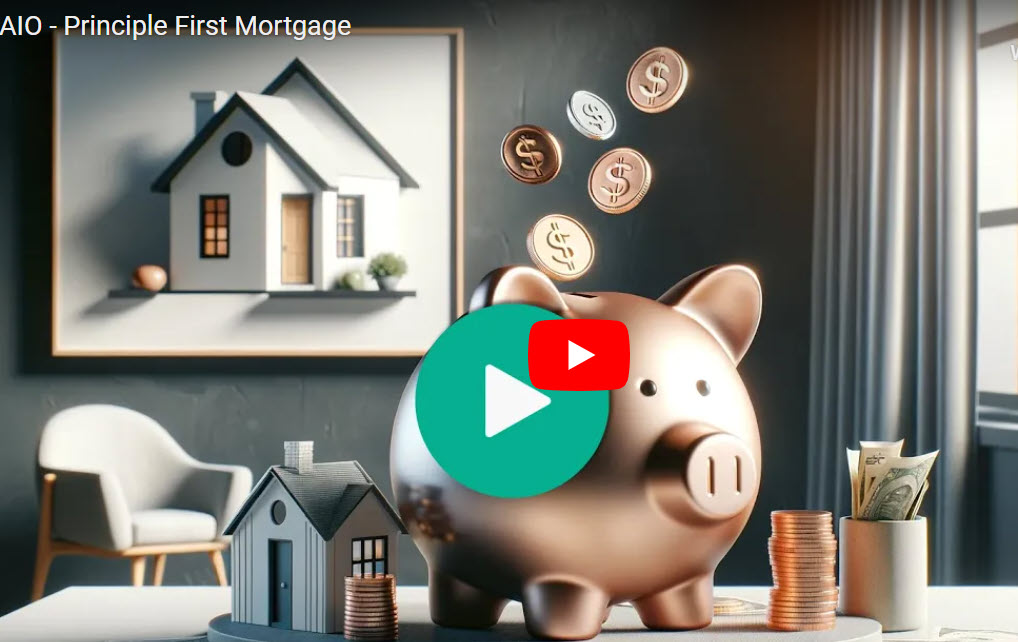6 minute lesson Lesson Summary Importance of timely document submission for your loan Types of…
Homebuyer 201: Down Payment Assistance
Lesson Summary
- Down payment assistance programs are set up by states, Lenders or state-run organizations.
- These programs help first-time home buyers or those who haven’t purchased a home in the last 3 years with their down payment.
- Typically, the assistance covers 4%, 3%, or sometimes 6% of the purchase price or a capped amount that changes yearly.
- The benefit of using these programs is that it reduces the amount of money you need to come up with for a home purchase.
- However, the assistance is usually in the form of a second mortgage, which can affect your debt to income ratio.
- It’s important to work with a loan officer who is knowledgeable about these programs.
- Down payment assistance can be used with FHA or conventional loans.
- It’s a great option for those looking to become homeowners or build equity.
Saving for a home is increasingly challenging in today’s market.
Accessible down payment assistance is crucial, offering substantial support to first-time home buyers or those who’ve not owned in the past three years.
These programs frequently provide 3% to 6% of the home’s price, easing the financial burden, yet they introduce a second mortgage—a factor affecting your debt-to-income ratio.
Navigating these options requires expertise.
Understanding Down Payment Assistance
Down payment assistance programs, often state-administered endeavors, serve as vital lifelines for aspiring homeowners contending with the substantial upfront costs of purchasing a home. By contributing 3% to 6% toward the purchase price, they reduce the immediate financial strain on buyers. However, it’s paramount to recognize that this assistance typically takes the form of a subordinate mortgage, with implications for one’s debt-to-income (DTI) ratio. This underscores the importance of collaborating with a knowledgeable loan officer, who can guide you through the intricate details of these programs and ensure that the path to homeownership remains fiscally responsible and sustainable.
Defining the Basics
Down payment assistance programs are designed to bridge the gap for potential home buyers, making the leap to homeownership more achievable. By offering a portion of the purchase price, they alleviate the initial financial pressure while introducing new considerations for the mortgage structure.
These programs can be a boon for those who have not owned a home in the recent past, with certain initiatives specifically targeting first-time buyers. Such assistance minimizes upfront costs but often results in a secondary mortgage, influencing your overall financial commitment and monthly expenses.
Down payment aid can sometimes transform into a grant, eliminating repayment concerns.
Understanding the full implications of these programs is key: while they lower the barrier to entry into the housing market (sometimes with funds that need not be repaid), they also add complexity to your home loan. A prudent buyer should weigh the pros and cons, including potential long-term implications on their financial landscape.
Types of Assistance Programs
Down payment assistance can vary widely in structure and terms.
Often, these programs offer funds as a second, subordinate lien on the property, aiding with down payment.
Some assistance takes the form of a forgivable loan, provided you reside in the home for a pre-set period.
Additionally, there are grants that do not require repayment, making them highly attractive to eligible buyers.
It’s critical to review each program’s criteria and long-term effects on your finances.
Program Eligibility Criteria
Navigating the eligibility criteria for down payment assistance programs is the first step towards securing aid.
- First-time Homebuyer Status – Typically applies to those who have not owned a home in the past three years.
- Income Limits – Your household income must fall below certain thresholds, often based on the median income for the area.
- Property Location – The home must be within eligible areas determined by the program.
- Owner-Occupancy – Buyers are generally required to occupy the home as their primary residence.
- Education Requirements – Many programs mandate that participants complete a homebuyer education course.
Each program has unique stipulations, and meeting them is essential for approval.
Remember, assistance is finite; early application can be pivotal to receiving aid.
Financial Implications
When considering down payment assistance, it’s vital to understand the secondary loan’s nature. Often structured as a “silent second,” this lien on your property doesn’t require immediate, active repayment but still bears weight in your overall debt profile. Assessing the terms of repayment, which can include forgiveness over a period or payment upon property sale, informs long-term financial planning.
The incorporation of this additional loan alters your debt-to-income (DTI) ratio, a critical measure lenders use to evaluate loan applications. An elevated DTI could limit future borrowing capability, even if the second mortgage has favorable terms. It’s paramount to run precise calculations with a knowledgeable loan officer to discern the impact on your financial landscape and to ensure this advantageous stride into homeownership aligns with your economic trajectory.
Impact on Your Debt-to-Income
A second mortgage can complicate your DTI.
Consider this: A secondary mortgage, although perhaps favorable, is still a debt obligation. It forms part of the overall financial picture that lenders scrutinize heavily. Particularly, it’s the ratio of your debt relative to your income that commands attention. Thus, the addition of assistance-related debt can modify your standing with potential creditors, even though it’s instrumental in facilitating homeownership.
It may increment your DTI ratio, albeit slightly.
Without meticulous planning, that extra loan can sting. Imagine, if you will, that this second mortgage, acting as a silent partner, subtly swells your debt, impacting how lenders view you. It’s a delicate balance – one that deserves thoughtful consideration along with expert guidance to navigate effectively.
Your DTI, with careful management, remains manageable.
Finally, anticipate changes in assistance ceilings. Down payment assistance programs periodically adjust their terms, raising the curiosity about how such shifts impact existing mortgages. As of early 2023, for instance, it’s prudent to review updated program guidelines to understand the foreseeable financial effects, ensuring that your path to homeownership remains fiscally sustainable within the evolving landscape of lending practices.
Benefits of Lowered Initial Costs
Down payment assistance can alleviate the burden of hefty upfront costs, enabling more manageable entry into homeownership.
- Immediate Equity: A reduced personal down payment can mean starting with home equity sooner.
- Preserved Savings: Homebuyers can retain funds for home improvements, emergencies, or investments.
- Lower Barriers: Assistance programs lower the financial threshold for first-time buyers or those re-entering the market.
- Enhanced Purchasing Power: Buyers may afford homes in preferred neighborhoods that might be out of reach otherwise.
Lower initial costs can result in a smoother, less strained transition to owning a home.
Preserving liquid assets post-purchase offers homeowners a safety net and greater financial flexibility.
The Second Mortgage Explained
A second mortgage through down payment assistance is often structured as a subordinate loan.
- Secured by Equity: The second mortgage is secured by the home equity, ranking behind the primary loan.
- Terms of Repayment: The repayment terms can vary—some require monthly payments, while others are silent or forgivable over time.
- Effect on DTI: Carrying a second mortgage will impact your debt-to-income ratio, an important factor for future borrowing.
Understanding the repayment conditions is essential for long-term financial planning.
This type of financing can be instrumental in enabling homeownership but requires careful consideration of its implications.
Navigating the Application Process
Embarking on the application for down payment assistance demands meticulous attention to detail and a readiness to provide a thorough financial background. Potential homebuyers must navigate complex forms, meet stringent eligibility criteria, and often undergo homebuyer education courses. Effectively managing these steps is crucial to unlocking the financial support needed for your new home.
Securing down payment assistance is not merely filling out paperwork; it’s engaging in a strategic process that aligns with your homeownership goals. Collaboration with a knowledgeable loan officer who is adept in these programs can make a substantial difference in the success of your application.
Working with a Knowledgeable Loan Officer
A loan officer can be your guiding beacon.
Consider the loan officer as a specialist in financial navigation. They bring a wealth of experience and understanding of the nuanced world of home financing, including down payment assistance programs. Their role extends beyond facilitating the loan—they are there to strategize the best path forward.
Their expertise is paramount for a smooth transaction.
A loan officer with a deep knowledge of assistance programs – which can often be complex and layered with criteria you must meet – can demystify the financial landscape for you. They work as both advisor and ally throughout the process.
Navigating these waters is less daunting with their guidance.
With their pulse on current guidelines and requirements, a skilled loan officer ensures you’re informed about the ever-evolving assistance landscape. This includes staying updated on the latest program changes for 2023, modifying strategies as needed, and aligning resources to fit your unique financial situation.
Documents and Information Required
Before embarking on your quest for down payment assistance, you’ll need a robust dossier of documents.
To verify eligibility, programs typically require evidence of income, like recent pay stubs and tax returns, to start the process.
In addition, you’ll likely need to provide asset documentation, including bank statements and investment records, to ascertain your financial readiness.
Proof of stable employment and a consistent income stream is vital, often requiring letters from your employer or additional verification forms.
Lastly, ensure your credit report is accurate and up-to-date, as it’s a cornerstone in the application evaluation.
Deadlines and Timelines
Navigating down payment assistance programs demands awareness of specific deadlines and timelines; these vary by program and can influence your home-buying schedule. Ensure you understand these requirements early in the process.
Each assistance program carries unique application cutoffs. Submitting documents post-deadline can disqualify you from assistance.
Typically, funds are allocated on a yearly or quarterly basis. Late applications might face a delay until new funds are available.
Programs may set timeframes for when down payment assistance must be used, commonly post-approval. This impacts your home purchase planning, so keep a close eye.
Some assistance options might have recapture periods, where if you sell the home within a certain timeframe, you may need to repay the assistance funds.
Finally, your loan officer’s expertise is crucial in navigating these deadlines. Their guidance ensures you maximize your opportunities within the given timelines for assistance.
Assistance for Various Loan Types
Down payment assistance programs aren’t limited to a single mortgage type—they’re adaptable across the home loan spectrum. Whether you’re considering a government-backed FHA loan or a conventional mortgage, such programs can be tailored to fit.
For instance, FHA loans, known for their lower down payment requirements, pair well with assistance programs offering percentage-based or capped financial support. This synergy reduces the initial financial barrier for aspiring homeowners, enhancing accessibility to the property ladder.
As for conventional loans, “grant-type” or “silent second” assistance options align seamlessly with these loan structures, easing the upfront cash burden even further.
Compatibility with FHA Loans
Down payment assistance programs can be a boon for FHA loan applicants. Since FHA loans already offer lower down payment thresholds, adding assistance benefits amplifies the affordability factor, particularly for first-time buyers.
Compatibility with FHA loans often brings added flexibility within programs. Homebuyers can tap into these resources, enabling them to reserve personal savings for other homeownership expenses.
When combined with an FHA loan, down payment assistance can significantly decrease the cash required at closing. This integration can offer a smooth transition into homeownership, often providing a financial springboard rather than a monetary barricade potential buyers fear.
Layering down payment assistance atop an FHA loan may result in a more attractive debt-to-income (DTI) ratio, as it minimizes borrower expenses. While it introduces a secondary lien, known commonly as a “soft” or “silent” second, prudent financial planning and collaboration with a knowledgeable loan officer can ensure this strategy promotes sustainable homeownership.
Using Assistance with Conventional Loans
Conventional loans paired with down payment assistance can create a seamless homebuying experience, offering stability with potentially lower rates. Engage with reputable lenders to explore this viable path toward property ownership.
Down payment aid significantly reduces out-of-pocket costs, making conventional loans more accessible. The need for upfront capital is eased, opening doors to those with limited savings.
Often, assistance programs come with beneficial terms when linked with conventional financing. These might include lower interest rates or even no interest at all, enhancing the deal.
Pairing assistance with a conventional loan may contribute to favorable mortgage conditions. This strategic financial move could potentially reduce monthly mortgage payments, leaving room for other investments.
Eligibility for down payment programs alongside conventional loans requires meticulous documentation. These programs aim to facilitate ownership, especially for individuals who are venturing into the real estate market for the first time.
Finally, remember that choosing the right assistance for one’s conventional loan is crucial. Diligent research and professional guidance are essential to navigate the nuances and secure the best outcome for your home purchase.




